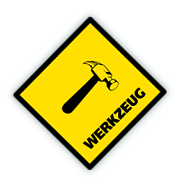Installation¶
Werkzeug requires at least Python 2.6 to work correctly. If you do need to support an older version you can download an older version of Werkzeug though we strongly recommend against that. Werkzeug currently has experimental support for Python 3. For more information about the Python 3 support see Python 3 Notes.
Installing a released version¶
As a Python egg (via easy_install or pip)¶
You can install the most recent Werkzeug version using easy_install:
easy_install Werkzeug
Alternatively you can also use pip:
pip install Werkzeug
Either way we strongly recommend using these tools in combination with virtualenv.
This will install a Werkzeug egg in your Python installation’s site-packages directory.
From the tarball release¶
- Download the most recent tarball from the download page.
- Unpack the tarball.
- python setup.py install
Note that the last command will automatically download and install setuptools if you don’t already have it installed. This requires a working Internet connection.
This will install Werkzeug into your Python installation’s site-packages directory.
Installing the development version¶
- Install Git
- git clone git://github.com/mitsuhiko/werkzeug.git
- cd werkzeug
- pip install --editable .
virtualenv¶
Virtualenv is probably what you want to use during development, and in production too if you have shell access there.
What problem does virtualenv solve? If you like Python as I do, chances are you want to use it for other projects besides Werkzeug-based web applications. But the more projects you have, the more likely it is that you will be working with different versions of Python itself, or at least different versions of Python libraries. Let’s face it; quite often libraries break backwards compatibility, and it’s unlikely that any serious application will have zero dependencies. So what do you do if two or more of your projects have conflicting dependencies?
Virtualenv to the rescue! It basically enables multiple side-by-side installations of Python, one for each project. It doesn’t actually install separate copies of Python, but it does provide a clever way to keep different project environments isolated.
So let’s see how virtualenv works!
If you are on Mac OS X or Linux, chances are that one of the following two commands will work for you:
$ sudo easy_install virtualenv
or even better:
$ sudo pip install virtualenv
One of these will probably install virtualenv on your system. Maybe it’s even in your package manager. If you use Ubuntu, try:
$ sudo apt-get install python-virtualenv
If you are on Windows and don’t have the easy_install command, you must install it first. Once you have it installed, run the same commands as above, but without the sudo prefix.
Once you have virtualenv installed, just fire up a shell and create your own environment. I usually create a project folder and an env folder within:
$ mkdir myproject
$ cd myproject
$ virtualenv env
New python executable in env/bin/python
Installing setuptools............done.
Now, whenever you want to work on a project, you only have to activate the corresponding environment. On OS X and Linux, do the following:
$ . env/bin/activate
(Note the space between the dot and the script name. The dot means that this script should run in the context of the current shell. If this command does not work in your shell, try replacing the dot with source)
If you are a Windows user, the following command is for you:
$ env\scripts\activate
Either way, you should now be using your virtualenv (see how the prompt of your shell has changed to show the virtualenv).
Now you can just enter the following command to get Werkzeug activated in your virtualenv:
$ pip install Werkzeug
A few seconds later you are good to go.
